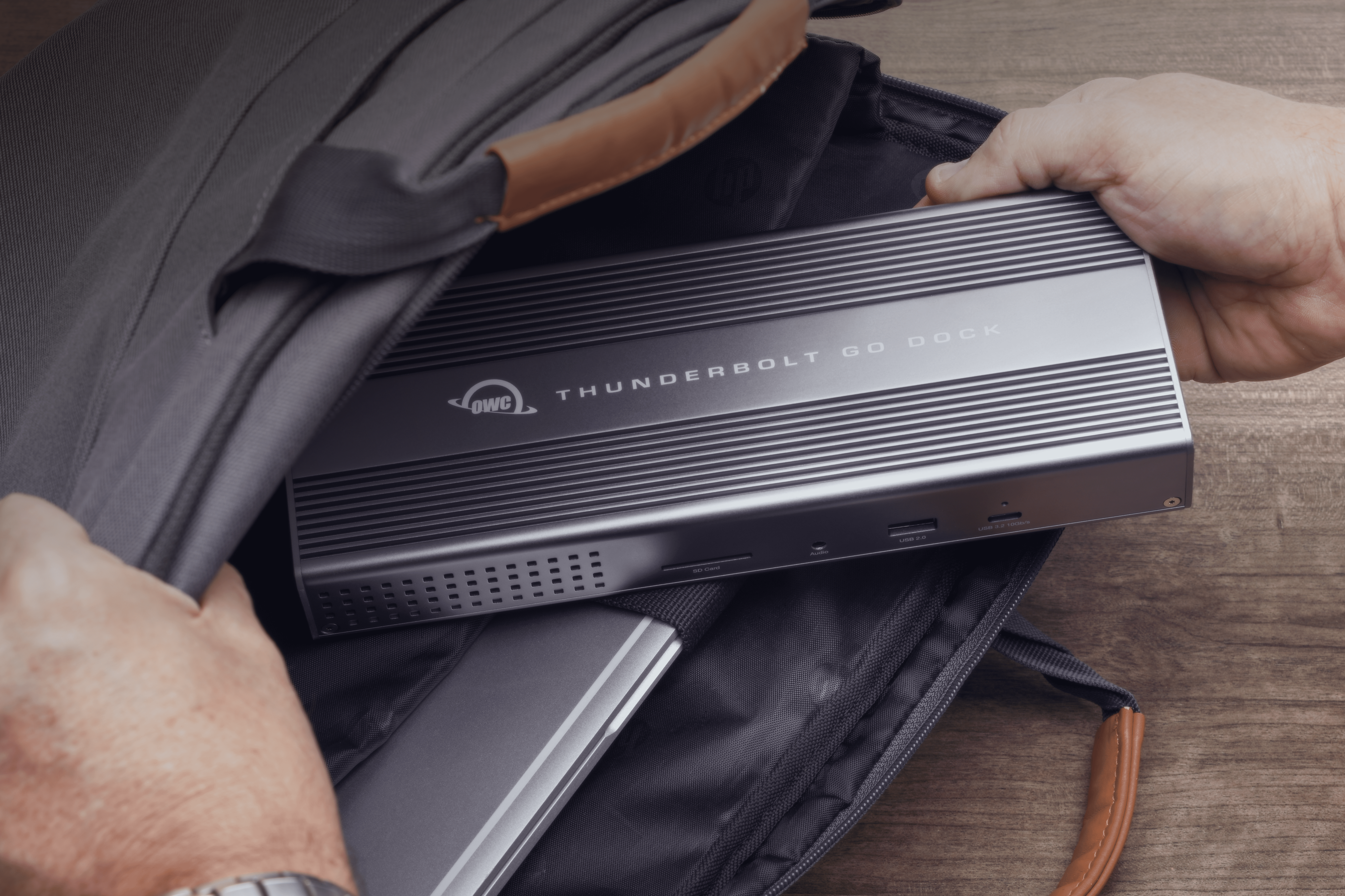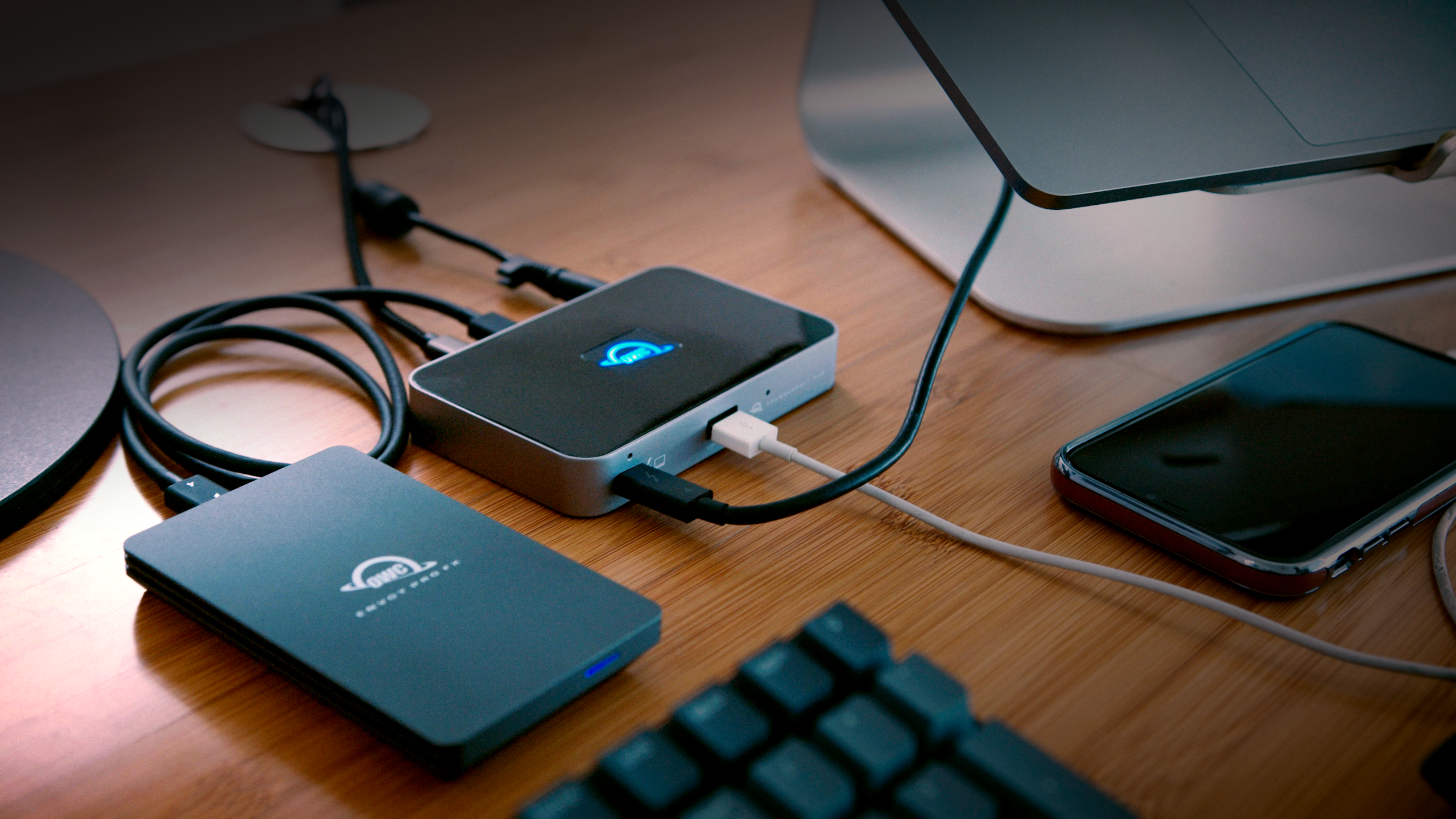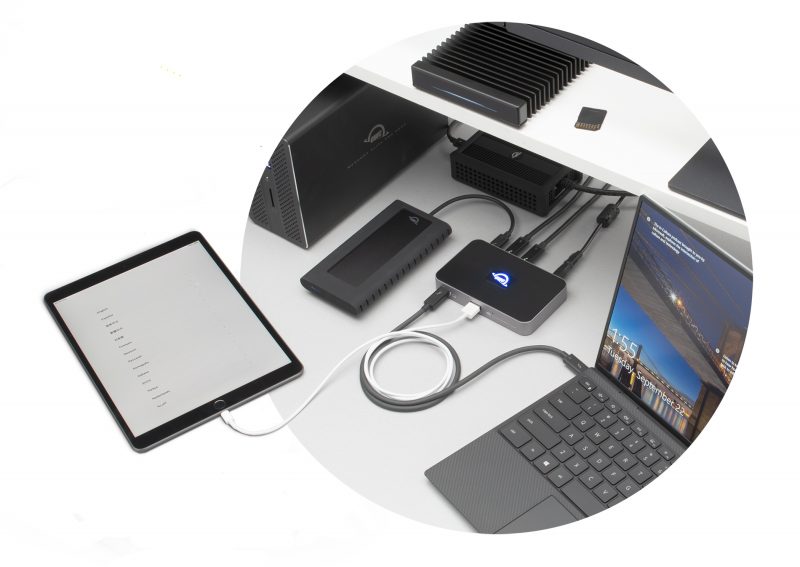Docking stations vs USB hubs: What's the difference?
OWC's Founder and CEO, Larry O'Connor provides his thoughts on the differences between docking stations and USB hubs

Though our personal computing devices have gotten smaller and more powerful over the years, the number of USB, Thunderbolt, and other types of ports present on these devices has decreased. And no matter if your device has one, two, or three USB-C or Thunderbolt ports, the fact of the matter is you can always use more—especially if you depend on external devices such as hard drives and adapters to get your work done.
And that's where docks and hubs come in. Both docks and hubs have risen in popularity and necessity alongside the rise of USB-C and Thunderbolt. Some of this is due to the lack of ports we mentioned earlier, but some of it is also due to how powerful and versatile these ports are due to their fast data transfer speeds and their ability to pass through power and display signals to your main device.
Unfortunately, “dock" and “hub" are sometimes used interchangeably to describe devices that add and enable these connections, but there are some differences between the two. Here's what you need to know.
Thunderbolt 3/4 vs. USB-C
Before we can address hubs and docks, let's talk about the protocol and cable specification behind these devices because this is the first place where a lot of confusion around device connectivity starts.
Thunderbolt 3/4 is a protocol and USB-C is a type of connector and cable specification. Thunderbolt is Intel’s trademarked name given to a high-speed protocol that can deliver power and adjust data and video bandwidth on-the-fly depending on its use. While Thunderbolt 1 and 2 used the Mini DisplayPort form factor Thunderbolt 3 and 4 use the USB-C port.
In other words, USB-C refers to the connector (port) and cable specification, whereas Thunderbolt 3/4 refers to the capabilities that are available over that USB-C connection.

Power supply
The first big difference when it comes to docks and hubs is that Thunderbolt 4 docking stations supply more power than hubs. Among other features, this can add to the cost. That is why dynamic power in a docking station is important. This allows docks to supply additional power to your computer, but only when it’s needed.
Sign up to the TechRadar Pro newsletter to get all the top news, opinion, features and guidance your business needs to succeed!
It also allows the power supply on some docks to be smaller than those on others. And unless you’re running a half-dozen or more bus-powered devices at once that are connected to your dock, you won’t see any power drain on your computer.

Larry O'Connor is the founder and chief executive officer of Other World Computing (OWC). OWC offers an end-to-end hardware, software, and accessories ecosystem that provides reliable computing solutions to consumers and professionals.
Under his leadership, OWC has grown dynamically over the past 35 years – beginning with re-inking printer ribbons and selling memory as an online e-commerce pioneer to providing the first scale Processor Upgrades for G3 Apple Macs. It is now a worldwide technology brand that provides a comprehensive lineup of award-winning hardware and software solutions.
Extending the useful life of technology is core to Larry’s beliefs and the driving force behind many of OWC’s products. He has taken a similar approach to philanthropy by combining his passion for regenerative agriculture and innovative technology. He was directly involved in the production of the 2020 Netflix documentary Kiss the Ground, which has catalyzed a global movement toward regenerative farming practices and is transforming soil around the world. Whether it’s through technology or regenerative Agriculture or solar and wind power, Larry loves connecting with people, and finding ways to empower them to help make a better world for all of us.
Multiple “hubbing" and consistent speeds
One of the long-anticipated features brought along by Thunderbolt 4 is the ability to add multiple Thunderbolt devices to one dock, creating up to three independent chains. This is new to the Thunderbolt spec because Thunderbolt 3 didn’t allow for this and it allows docks to act as a parent device for hubs, but not the other way around.
But perhaps the most important improvement with Thunderbolt 4 is the fact that now both Macs and PCs have consistent and standardized speeds. Thunderbolt 3 and Thunderbolt 4 on the Mac provide 40Gb/s (which means that aside from the hubbing capabilities mentioned above, Mac users won’t see any performance difference between Thunderbolt 3 and Thunderbolt 4). Prior to Thunderbolt 4, if a PC user connected a Thunderbolt 3 device, throughput speeds could vary between 20 and 40Gb/s. Now, all Thunderbolt 4 users can enjoy the same speeds.

What it all comes down to
At the end of the day, when you’re in the market for a device that allows you to connect multiple other devices to your computer, you not only have to determine between Thunderbolt and USB-C, but you have to decide between a dock vs a hub. Let me make it easy for you:
If you need to simply expand the number of available Thunderbolt ports for external drives or other devices, you can do fine with a hub.
But if you need something with more gusto, can provide more power, and has lots of different connection options like headphones, SD card readers, and USB-A ports, go for a docking station.
No matter which you choose, you'll be able to get more out of your devices and you’ll waste a lot less time searching for dongles or adapters.

Larry O'Connor is the founder and chief executive officer of Other World Computing (OWC). OWC offers an end-to-end hardware, software, and accessories ecosystem that provides reliable computing solutions to consumers and professionals.
Under his leadership, OWC has grown dynamically over the past 35 years – beginning with re-inking printer ribbons and selling memory as an online e-commerce pioneer to providing the first scale Processor Upgrades for G3 Apple Macs. It is now a worldwide technology brand that provides a comprehensive lineup of award-winning hardware and software solutions.
Extending the useful life of technology is core to Larry’s beliefs and the driving force behind many of OWC’s products. He has taken a similar approach to philanthropy by combining his passion for regenerative agriculture and innovative technology. He was directly involved in the production of the 2020 Netflix documentary Kiss the Ground, which has catalyzed a global movement toward regenerative farming practices and is transforming soil around the world. Whether it’s through technology or regenerative Agriculture or solar and wind power, Larry loves connecting with people, and finding ways to empower them to help make a better world for all of us.